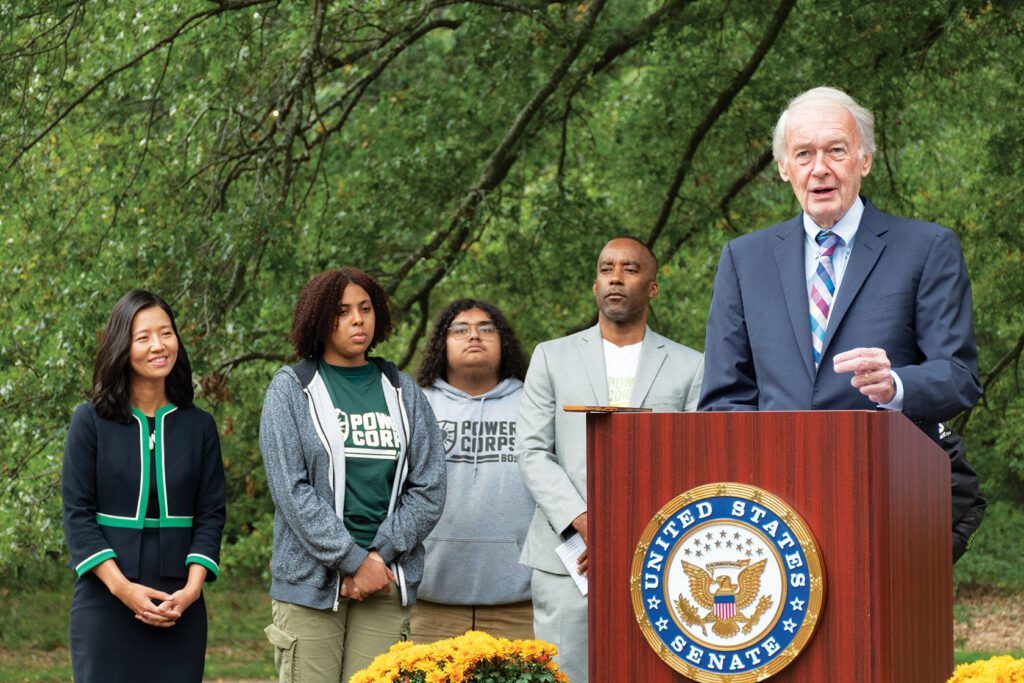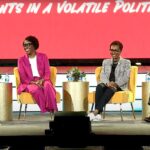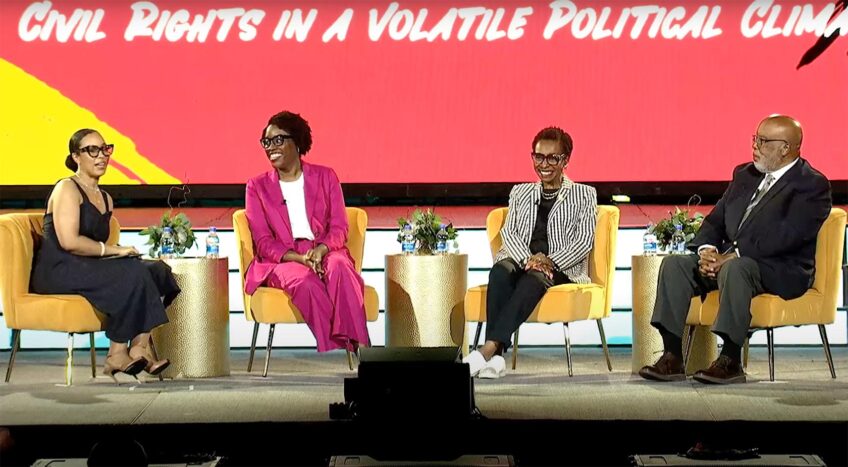
New federal funding will boost the city of Boston’s efforts to expand and maintain its tree canopy.
The $11.4 million grant from the U.S. Forest Service will support implementation of the city’s urban forest plan released in 2022, which focuses on how to handle planting and maintenance of city-owned trees.
As the city faces a changing climate, an expanded tree canopy offers a host of benefits, including a way to reduce heat island effects and improve air quality and stormwater drainage. Residents have already experienced heat island effects — higher temperatures in urban areas — in parts of Roxbury, Dorchester and Mattapan.
The Urban and Community Forestry Grant will be divvied across a handful of arboreal projects, focused on maintaining existing trees — like ash trees, which face infestations from the invasive emerald ash borer beetle — as well as planting new trees, directly on city land and, through outside organizations, on private property.
Todd Mistor, who serves as the city’s director of urban forestry, a role created under the plan, said funding being set aside for tree maintenance is rare, and the grant essentially doubles the city’s budget for that purpose. He said in his career, he’s never before received such a grant.
“This funding is going to be significant in preserving and maintaining our existing canopy, because that’s the best way to make sure that our canopy coverage stays at the number it is and can continue to grow and increase,” he said.
Funding will also go toward experiments in developing methods of planting trees in smaller public spaces like sidewalks while maintaining accessibility, and also helping PowerCorpsBOS, a green-jobs training program with a focus on marginalized communities, to expand its forestry program.
“All together, these investments will facilitate the sustainable growth of Boston’s trees, wherever they live,” Mayor Michelle Wu said at a news conference Oct. 6 announcing the grant. “We’ll have more beautiful, shady, accessible streets for all our residents and connect our community members to good-paying green jobs to advance our city’s climate goals.”
The concept of an urban forest generally refers to all trees in the city, though a local government has specific jurisdiction only over those that are in public spaces.
Environmental equity
Mistor said an important consideration is making sure that work is done equitably. This includes identifying priority areas based on where there are fewer trees, extended heat events, enduring effects of historic redlining and identified environmental justice communities.
“I want to increase canopy coverage anywhere and everywhere, but I want to make sure we’re being strategic about how we use limited resources,” he said.
As Boston approaches expanding its tree canopy, one hurdle is the city government’s limited reach. The city’s urban forest plan currently covers trees in city-owned spaces — on streets and in parks — but not on privately-owned land or areas owned and managed by the state Department of Conservation and Recreation.
According to the plan document, 60% of the city’s urban forest exists on land outside the city’s direct control.
“We have to consider all this land, even though we may not have direct relation to what’s going on in this property,” Mistor said. “The urban forest plan gives us this energy behind coming up with these strategies and implementing these strategies and building on that momentum, and just celebrating what we have and what we can do.”
A new coalition of nonprofits and community-based organizations called the Boston Tree Alliance is leading an effort, with city support, to expand the private piece of the urban forest. The city originally gave $1 million to the fund the alliance, which is being bolstered by about $2.6 million through the federal grant.
The additional funding will allow the program, which was originally projected to plant 600 trees on private property, to add an additional 1,200 to 1,500 trees, as well as extend its planned three-year run to five years.
The work will help circumvent complications that come out of city efforts to plant trees on private land, said Stacey Beuttell, senior director for Nature in the City program at Mass Audubon, which is acting as the organizer of the coalition.
“The city is doing amazing work in thinking about how to plant additional trees on public lands, but it gets more complicated for the city to plant trees on private lands just because of jurisdiction and because of the requirements for them as a city or municipality to give out money to do things on private land,” Beuttell said.
Over the next three months, the Tree Alliance will develop a grant application and process for defining priority zones, with a goal to start putting trees in the ground early next year.
Community involvement
As the city works on building up its tree canopy, David Meshoulam, executive director of Speak for the Trees, a Dorchester-based nonprofit, said he’s excited the city is being proactive about care and planting. But he said more work needs to be done engaging with community members and groups to inform and educate them to ensure the trees stay healthy, especially in their early years.
“You can’t just plant a tree and walk away,” he said. “There’s a lot of interest we see from residents and organizations to plant trees; the challenge is making sure that the trees are planted the right way at the right time, it’s the right species, and there’s someone caring for and keeping an eye on that for you, especially for the first couple of years.”
Building those connections is a priority for the city, Mistor said, to help identify where trees can be planted and maintained.
Planting trees is different than other municipal works projects, he said, so getting community buy-in is important.
“When public works has a planning process, they understand they have to go in and reconstruct the street, and that asset is going to last 30 years and basically you come in, you plan, you do the construction and then you do minimal maintenance for the next 30 years,” Mistor said. “Trees are a little bit different, you know, because they’re living organisms.”
He said residents have to be invested in caring for the trees as well. For example, piling trash to close to a tree can cause collisions when a truck comes to pick it up.
Working with communities also requires building trust among residents who may have concerns about trees falling, dropping leaves or tree roots infiltrating sewer systems.
“You have to move at the speed of trust,” Meshoulam said. “You have to really engender trust with residents, with community groups, and ensure that the work is meaningful and important to them.”
Mistor said the process of building those relationships might take time but could lead to wider canopy coverage down the line.
“We may only plant a few trees initially, but we can continue to build on that, we can change people attitudes and change people’s perceptions,” he said. “But we can’t force it, right? It’s got to be a process, and we’re open to working through that process.”






